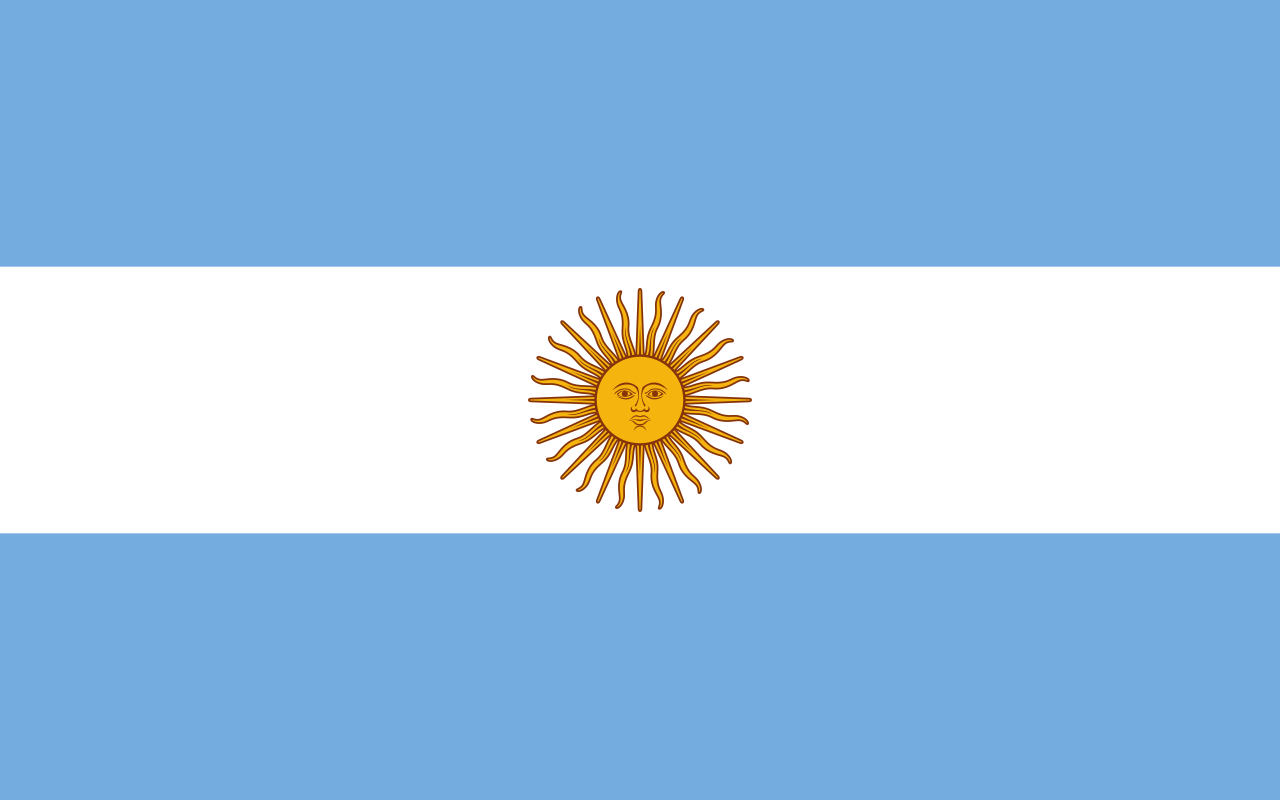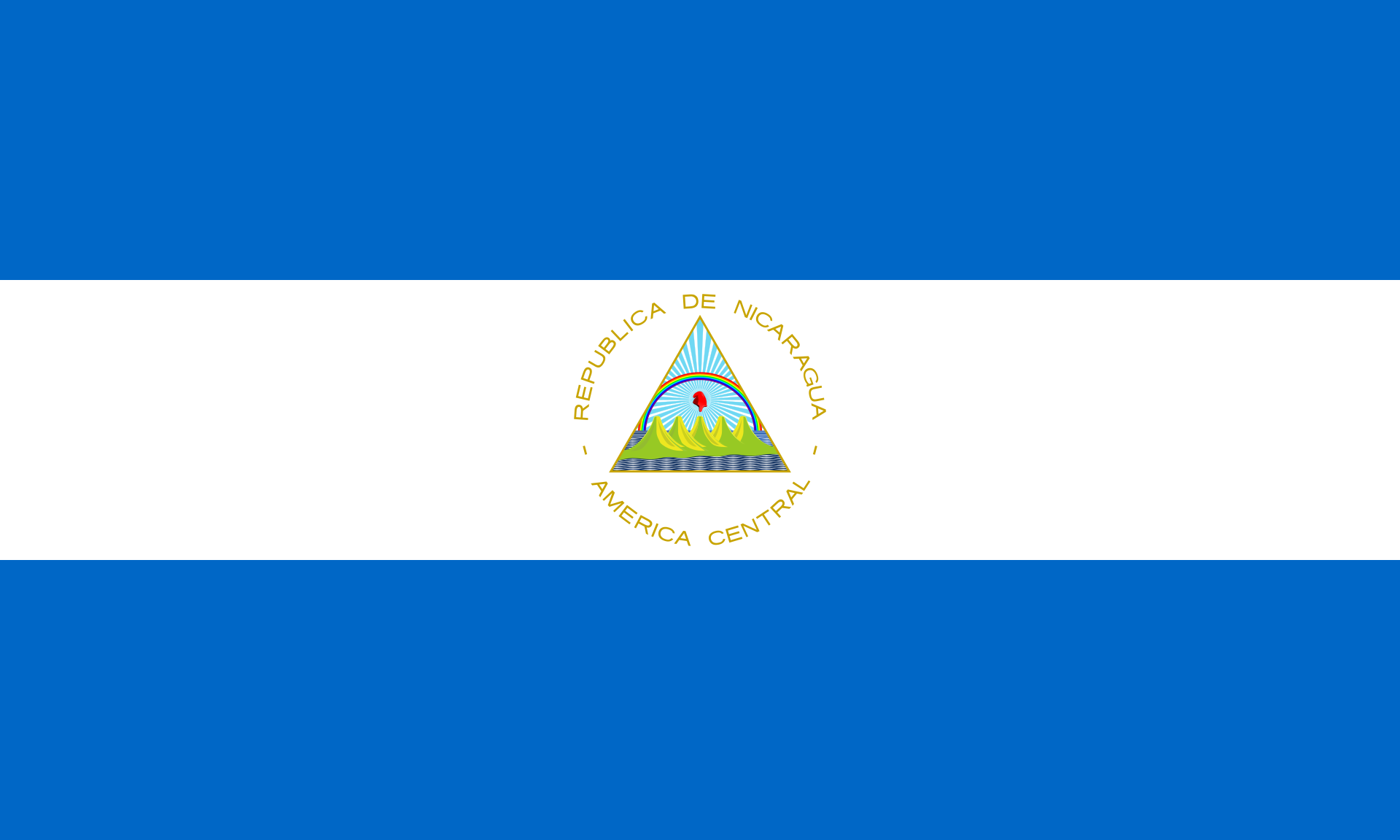Azure – It’s a word that sounds mystical and otherworldly, almost like something out of a fantasy novel. For those who are familiar with technology, the word conjures up images of the cloud, software development, and data storage. But what does azure symbolize beyond the technical meaning? It’s one of those words that just jumps off the page, and it’s worth taking a few moments to ponder what it represents.
At its most basic level, azure is just a shade of blue, and yet, it has a more profound meaning. It’s serene, calming, and evokes feelings of peace and tranquility. But azure can also represent power, growth, and forward thinking. It’s dynamic and ever-evolving, just like technology itself. So, when we combine the two, azure becomes more than just a color or term for cloud computing. It takes on a bigger role, representing the potential of technology for growth, innovation and creating a better tomorrow.
Which brings us to the question of what does Azure symbolize in the grand scheme of things? It’s easy to get lost in the details and miss the big picture, but azure can help us see beyond the mundane. It represents a future where technology is leveraged to create a better world for everyone. From improving healthcare to reducing carbon emissions, technology holds the power to make significant changes in our lives. Azure symbolizes this potential and inspires us to push the boundaries, leverage technology, and create a better world.
Azure as a Color
Azure is a vibrant shade of blue that exudes a sense of calmness, tranquility, and serenity. It is a color that is reminiscent of clear blue skies or a calm and placid ocean. The name “azure” is derived from the Arabic word “lazward,” which means blue. Azure is a popular color in modern design, particularly in technology, and is synonymous with Microsoft Azure, the cloud computing platform.
When it comes to color psychology, azure is believed to evoke feelings of peace, harmony, and relaxation. It has a calming effect that can help reduce stress and anxiety, making it a popular color choice for healthcare and wellness brands. Azure is also associated with trust, security, and loyalty, making it a popular choice for financial and insurance companies.
Azure has been used in art and fashion for centuries, and has remained a popular choice among designers and artists alike. This versatile color can be paired with a range of other hues to create a variety of moods and tones, from bold and vibrant to calming and soothing.
If you’re considering using azure in your designs or branding, it’s important to choose the right shade. There are many different shades of azure, from light and airy to deep and rich. Lighter shades of azure are often used to create a sense of freshness and cleanliness, while deeper shades can add sophistication and elegance.
Azure in Heraldry
Azure is a color that has been used in heraldry since the Middle Ages. It is a bright and vibrant blue color that symbolizes loyalty, honesty, and truth. It is often used as a background color for crests, coats of arms, and shields. Azure is derived from the Persian word for lapis lazuli, a precious stone that was valued for its deep blue hue.
- Azure is associated with the element of air
- It represents purity, clarity, and serenity
- Azure is often used to represent water, as it is the color of the sea and sky
The use of azure in heraldry is governed by strict rules and regulations. The color is often used to denote nobility, and it is frequently used in the crests and coats of arms of royal families. The use of azure in heraldry can also be symbolic of the ocean, representing power and authority.
The following table shows some examples of azure in heraldry:
| Coat of Arms | Description |
|---|---|
 |
The coat of arms of the British Royal Family features an azure background |
 |
The coat of arms of the Spanish Royal Family features an azure background |
 |
The coat of arms of the city of Paris features an azure background |
Azure is a color that has been used in heraldry for centuries, and it is still widely used today. Whether it represents loyalty, purity, or power, azure is a symbol of importance and significance in the world of heraldry.
Azure in flags
Azure, the color of the sky on a clear day, has been used on flags for centuries. Often, it represents loyalty, strength, and constancy. Here are some notable flags that use azure:
- United Nations Flag: The UN flag uses a light blue color called “UN Blue,” which is similar to azure. The color represents peace and goodwill.
- European Union Flag: The EU flag uses a darker blue color that is often referred to as “EU blue.” The color represents the ideals of unity, solidarity, and harmony among the peoples of Europe.
- Flag of Israel: The flag of Israel prominently features a blue Star of David on a white background with two horizontal blue stripes. The blue represents the stripes on a traditional Jewish prayer shawl, with the Star of David symbolizing the Jewish people.
Azure is also used on many other flags around the world, often representing bodies of water, the sky, or the ideals of freedom and sovereignty.
Below is a table of countries that use azure in their flag:
| Country | Flag | Color(s) |
|---|---|---|
| Argentina |  |
Light blue and white |
| Belize |  |
Blue and white |
| Cape Verde |  |
Blue, white, and red |
| Finland |  |
Blue and white |
| Greece |  |
Blue and white |
| Honduras |  |
Blue and white |
| Kosovo |  |
Blue and yellow |
| Nicaragua |  |
Blue and white |
| North Macedonia |  |
Red, yellow, and blue |
| Samoa |  |
Red, white, and blue |
| Solomon Islands |  |
Blue, green, and yellow |
| Ukraine |  |
Blue and yellow |
| Uruguay |  |
Blue and white |
From the UN to individual countries, azure is a color that is widely used on flags to represent various ideals and values.
Azure in Art
The color azure has played a significant role in the world of art across history and cultures. Azure has been used by artists to evoke emotions, create contrasts, and convey messages through their artwork. Here are some examples of how azure has been used in art:
- Symbolism: Azure has been historically associated with divinity and royalty. In classical Greek mythology, Zeus adorned himself with azure to signify his divine nature. Similarly, azure was a highly sought-after pigment in Renaissance art, used by the likes of Michelangelo and Leonardo da Vinci to signify the holiness of religious figures and the grandeur of the aristocracy.
- Contrasts and Moods: Azure has also been used to contrast with warmer colors on the color wheel, such as oranges, yellows, and reds, creating a sense of calmness. This was expertly used by Vincent Van Gogh in his painting “Starry Night” where he used shades of blue to create a serene and soothing atmosphere.
- Landscape Art: Azure has been extensively used in landscape paintings, particularly in depicting the skies and water. It creates a sense of vastness and depth, especially when contrasted with white clouds or darker hues of green and brown in the landscape. The famous Impressionist painter Claude Monet used azure in his paintings to depict the French countryside, creating pleasing compositions with his brushstrokes.
Azure has also been used in abstract art. Abstract artists use it to create a sense of depth and mystery in their works; it evokes a sense of the unknown and the infinite. The color azure is versatile and can be used to communicate a wide range of moods and emotions, making it an indispensable addition to any artist’s palette.
Overall, Azure has been a favorite color among artists through history, and it continues to inspire modern artists to this day. From Michelangelo using it to convey divinity, Van Gogh using it to create a calming mood, to Monet using it to depict nature, the versatility of azure in the world of art is endless.
Azure in literature
Azure has been used in literature to symbolize a range of concepts, from tranquility to mystery. Here are some examples of the use of azure in literature:
- In “The Great Gatsby” by F. Scott Fitzgerald, the character Jay Gatsby longingly gazes at the “blue lawn” outside of Daisy’s window, which is a symbol of his desire for the unattainable.
- In “The Blue Hotel” by Stephen Crane, the color azure is used to represent the deadly and mysterious nature of the Old West.
- In “The Blue Flower” by Henry Van Dyke, azure represents the search for love, beauty, and truth.
It is interesting to note that while azure is often associated with calmness and peacefulness, in literature it can also symbolize danger and mystery.
Azure can also be used to describe a character’s emotions. In “The Catcher in the Rye” by J.D. Salinger, Holden Caulfield describes feeling “blue” when he is sad and depressed. The color azure is often used to describe loneliness and melancholy.
Furthermore, azure also has a strong connection with the natural world. It is used to describe the color of the sky and the ocean, which are both awe-inspiring and vast. In this way, azure can represent the beauty of the world and the power of nature.
The table below summarizes the use of azure in literature:
| Literary work | Symbolism of azure |
|---|---|
| The Great Gatsby | Desire for the unattainable |
| The Blue Hotel | Deadly and mysterious nature of the Old West |
| The Blue Flower | Search for love, beauty, and truth |
| The Catcher in the Rye | Loneliness and melancholy |
Overall, azure is a versatile color that can be used to represent a wide range of ideas and emotions in literature. Its use in symbolism has helped to create vivid and memorable scenes in some of the most iconic literary works of our time.
Azure in Popular Culture
Azure is a color often used in popular culture to symbolize various concepts. From movies to music, azure has been used to add meaning and depth to artistic expression.
Six Ways Azure has Been Represented in Popular Culture
- Hope: Azure is often associated with hope, renewal, and growth. This symbolism can be seen in movies such as “The Shawshank Redemption,” where the main character finds hope and redemption through a tunnel of azure blue.
- Faith: Azure portrays faith and spirituality. The famous hymn “Amazing Grace” references the “sea of azure that lies before me.” Similarly, the movie “The Passion of the Christ” features azure blue in the opening sequence to symbolize divine power and the heavens.
- Control: Azure evokes show of control and order. In the movie “Willy Wonka and the Chocolate Factory,” azure symbolizes the regulation and order of the Wonka candy factory. The azure-blue uniform-wearing Oompa Loompas help to maintain the factory’s order.
- Creativity: Azure has an association with creativity, imagination, and innovation. The beloved French animated movie “The Triplets of Belleville” embodies this idea with the use of the vibrant and imaginative azure color seen throughout the movie’s animation.
- Peace: Azure represents the feeling of peace, calm, and tranquility, an idea often reflected in music. In Joni Mitchell’s famous song “Blue,” there are references to the “azure dreams” felt when staring out over an ocean vista.
- Freedom: Azure has come to symbolize freedom and independence, an idea particularly prevalent in American culture. The American Flag features azure blue in its symbolism, representing the nation’s values of liberty and patriotism.
Azure’s Use in Movie Color Palettes
Azure has often been used in films where the color palette plays a crucial role in telling stories and conveying emotions. For instance, blue has been used in movies like Avatar, to reinforce the feeling of otherworldliness and fantasy. A common use of azure is in thriller and horror movies like Jaws and The Silence of the Lambs, where azure can add a sense of dread and fear to a scene. Similarly, azure is used to depict elegance and sophistication, such as in the movie The Great Gatsby, set in the luxurious, extravagant world of Jazz Age New York.
| Movie Title | Azure Usage |
|---|---|
| The Shawshank Redemption | Azure used to symbolize hope and redemption |
| Amazing Grace | Azure used to symbolize faith and spirituality |
| The Triplets of Belleville | Azure used to symbolize creativity and imagination |
| Jaws | Azure used to create a sense of fear and dread |
| The Great Gatsby | Azure used to represent luxury and sophistication |
Overall, azure is a color that holds different meanings and significance for various artists and creators. Its versatility makes it a powerful tool in storytelling, and its use in popular culture is sure to continue for years to come.
Azure in Gemstones
Throughout history, gemstones have played a significant role in various cultures and belief systems. Azure is a prevalent color seen in gemstones, and it symbolizes different things in different cultures. Here, we will explore what azure symbolizes in gemstones.
The Number 7
The number 7 is associated with many spiritual and mystical beliefs. In terms of azure gemstones, the number 7 is significant because many of these stones have seven different shades of blue. These shades of blue symbolize the seven heavens in Islamic belief and the seven chakras in Hinduism.
- In the Islamic faith, the seven heavens represent a hierarchical structure that separates the universe into seven levels.
- In Hinduism, the seven chakras are believed to be energy points in the body that align with the seven shades of blue in azure gemstones.
- Similarly, in crystal healing, the seven shades of blue in azure stones are believed to correspond to the seven chakras in the body.
The number seven is also significant in Christianity. According to the Bible, God created the world in six days and rested on the seventh day. The seventh day is known as the Sabbath, and it is a day of rest and worship. Azure gemstones with seven shades of blue are believed to represent the spiritual rest and renewal that comes with the Sabbath day.
Symbolism in Gemstones
Azure gemstones have been used for thousands of years by various cultures for their beauty and symbolism. Some of the most popular azure gemstones are listed below:
| Gemstone | Symbolism |
|---|---|
| Lapis Lazuli | Wisdom, truth, and enlightenment |
| Aquamarine | Courage, protection, and communication |
| Turquoise | Healing, protection, and good luck |
| Blue Sapphire | Wisdom, intelligence, and spiritual truth |
The symbolism of azure gemstones varies based on the culture and belief system, but the stones are universally appreciated for their beauty and tranquility. Whether it represents the seven chakras, the seven heavens, or the Sabbath day, azure gemstones are a testament to the beauty and power of nature.
Azure as a Place Name
Azure is not only a color and a cloud computing service provider, but also a popular name for places around the world. Here are some of the places named Azure and what they symbolize:
- Azur, Israel – a historic village located in the Northern District of Israel
- Azur, Iran – a village in Razavi Khorasan Province, Iran
- Azur, Lebanon – a municipality in the Bekaa Valley of Lebanon
- Azur, Togo – a town in the Kara Region of Togo
The name Azure has been associated with various meanings in different cultures. In Hebrew, Azur means “help” or “helper,” while in Arabic, it means “blue.” Blue is also the color of trust, wisdom, and stability, making Azure an ideal name for places that embody these qualities.
In addition to these locations, Azure is also commonly used in the United States as a name for streets, neighborhoods, and real estate developments. For example, Azure at Hacienda Lakes is a gated community in Naples, Florida, that offers luxurious homes and resort-style amenities.
Azure is a unique and elegant name that can add a touch of sophistication and calm to any location. It’s no wonder that it has become a popular choice for places across the globe.
Overall, Azure as a place name represents a sense of trust, wisdom, and stability. Whether it’s a historic village in Israel or a luxurious real estate development in Florida, the name Azure symbolizes a place of serenity and elegance.
Azure in Geography
Azure is not only a term found in tech, but is also commonly used in geography. It is a color that reflects the blue of the sky and the sea. In nature, azure can be seen in the oceans and skies around the world.
Azure in Flag Design
- Azure is a popular color in flag design, often used to represent the sea or sky in a country’s national flag.
- Some examples of flags with azure include Thailand, Venezuela, and Argentina.
- Azure can also be found in the flags of many island nations, such as Samoa and Tonga, representing the surrounding ocean.
Azure in Map Making
Azure is often used in maps to represent bodies of water, such as rivers, lakes, and oceans. It is a versatile color, able to represent different depths and shades of water in a map. It can also be used to indicate locations of water-related features like waterfalls and dams.
Azure in Numerology
In numerology, the number 9 is associated with the color azure. It is believed to represent universal love, spiritual enlightenment, and the concept of karma. People who are drawn to the color azure are said to be creative, intuitive, and have a deep understanding of the universe.
| Number | Azure Qualities |
|---|---|
| 9 | Universal love, spiritual enlightenment, karma |
Whether through flag design, map making, or numerology, azure has a significant presence in geography and can carry powerful symbolic meanings.
Azure in Branding and Marketing
Microsoft Azure, commonly known as Azure, is a cloud computing service created by Microsoft. It provides a variety of services, such as storage, virtual machines, and more that help businesses and individuals build, manage, and deploy applications and services through Microsoft’s global network of data centers. In branding and marketing, the color azure symbolizes trust, reliability, and the power of technology.
How Azure is Used in Branding and Marketing
- Visual Identity: Azure is a primary color in Microsoft’s visual identity, along with white, black, and various shades of grey. The color is used in Microsoft’s logo, website, and marketing materials to convey strength, innovation, and trust.
- Product Naming: Many Microsoft products, such as Azure DevOps and Azure IoT Central, feature the word “Azure” in their name to signify that the product is powered by Microsoft’s cloud computing platform.
- Advertising: Microsoft has used Azure in various advertising campaigns to showcase the platform’s capabilities and benefits. For example, a recent campaign featured the tagline “Empower your organization with Microsoft Azure” and highlighted how Azure could help businesses grow and innovate.
Azure’s Impact on Branding and Marketing
Azure’s branding and marketing strategy has helped Microsoft establish itself as a leader in the cloud computing industry. By creating a consistent visual identity and using the color azure to convey trust and reliability, Microsoft has built a powerful brand that customers trust and recognize.
Azure’s impact on marketing has also been significant. By offering a scalable and reliable cloud computing solution, Microsoft has enabled businesses of all sizes to build and deploy applications and services without the need for expensive hardware or IT infrastructure. This has opened up new opportunities for businesses to innovate and grow, which in turn has helped Microsoft grow its market share and revenue.
Azure’s Role in the Future of Branding and Marketing
As cloud computing continues to grow in popularity, Azure will play an increasingly important role in branding and marketing. By providing a flexible, scalable, and reliable platform for businesses and individuals to build and deploy applications and services, Microsoft has positioned itself as a leader in the industry. With new technologies, such as AI and machine learning, being integrated into the platform, Azure will continue to shape the future of branding and marketing for years to come.
| Azure | Other Cloud Computing Platforms |
|---|---|
| Consistent visual identity | Inconsistent visual identity |
| Reliability and scalability | Inconsistent reliability and scalability |
| Integration with other Microsoft products | Limited integration with other platforms and vendors |
Overall, Azure’s strong brand and powerful cloud computing platform have helped it stand out in a competitive industry and establish itself as a leader in the market. As the use of cloud computing and technologies like AI continue to grow, Azure will likely continue to play a critical role in shaping the future of branding and marketing.
7 FAQs about What Does Azure Symbolize
1. How can I define Azure?
Azure is a color that is often described as a pale, bright blue, which resembles the color of the clear sky on a sunny day. It is a color that represents freshness, clarity, and tranquility.
2. What are some other meanings attributed to Azure?
Azure is often used as a symbol of loyalty, trust, and wisdom. It is also said to represent imagination, creativity, and inspiration.
3. What are some cultural associations with Azure?
Azure is often associated with the Greek god Zeus, who was depicted wearing a cloak of azure. The color is also found in various national flags, such as in the flag of the United Nations and the flag of Israel.
4. What is the significance of Azure in branding?
Many companies use Azure in their logo to symbolize trustworthiness, security, and professionalism. It is a color that is often associated with technology, finance, and healthcare.
5. How does Azure make people feel?
Azure is known for its calming and soothing effects. It evokes feelings of peace, serenity, and relaxation, making it a popular choice in interior design and fashion.
6. What are some complementary colors for Azure?
Azure pairs well with other shades of blue, white, gray, and silver. It can also be paired with warm colors like coral, peach, and gold to create a contrasting effect.
7. Can Azure be used in different shades?
Yes, Azure can be used in different shades, from light and pale to deep and dark. The shade of Azure used can greatly impact the mood and meaning behind it.
Closing Thoughts
We hope this article has shed some light on what Azure symbolizes and its various meanings and associations. Whether you’re using it in branding, fashion, or interior design, Azure is a color that evokes feelings of peace, tranquility, and loyalty. So next time you see the clear blue sky or a logo with the color Azure, think about the subtle message it may be conveying. Thanks for reading, and come back soon for more interesting content.

